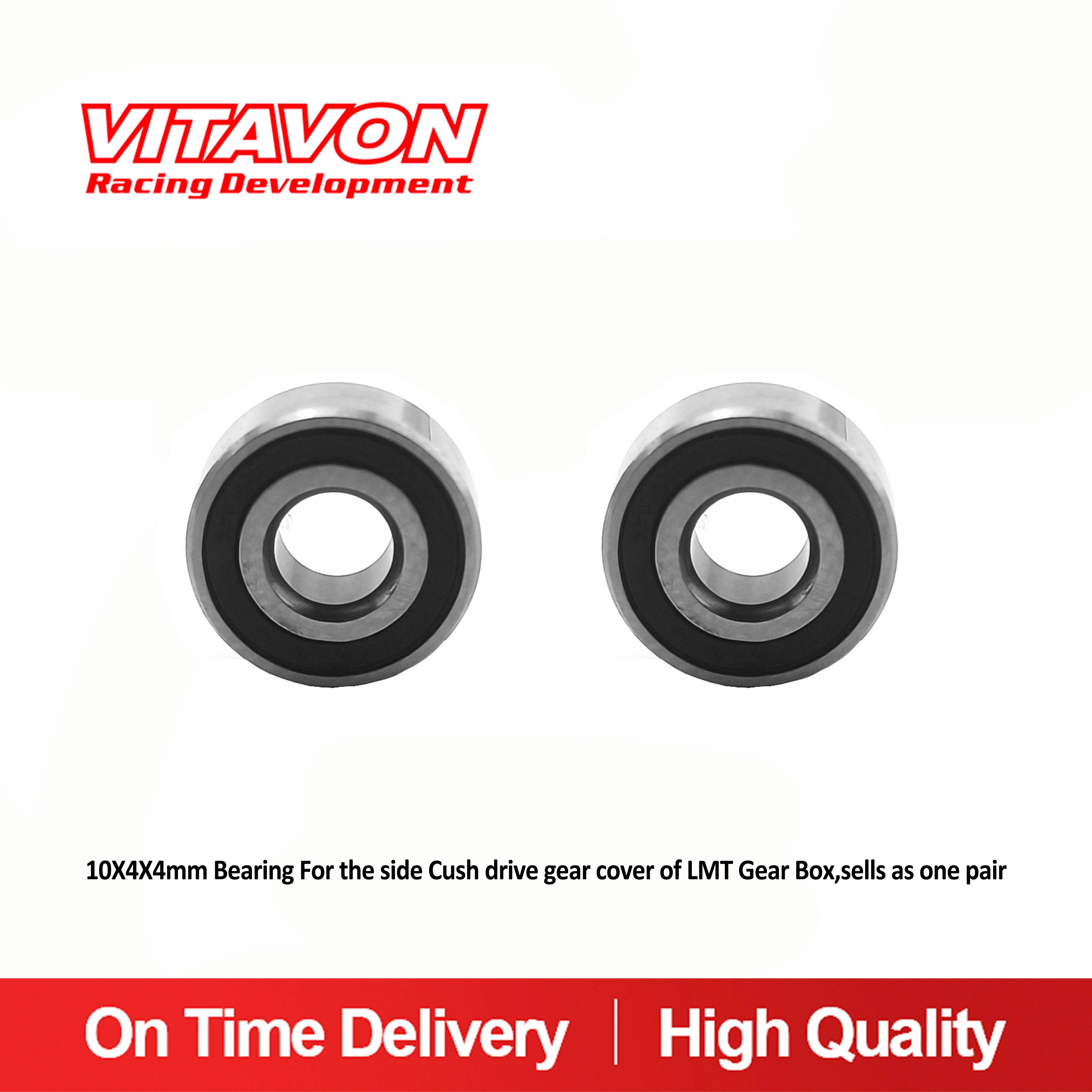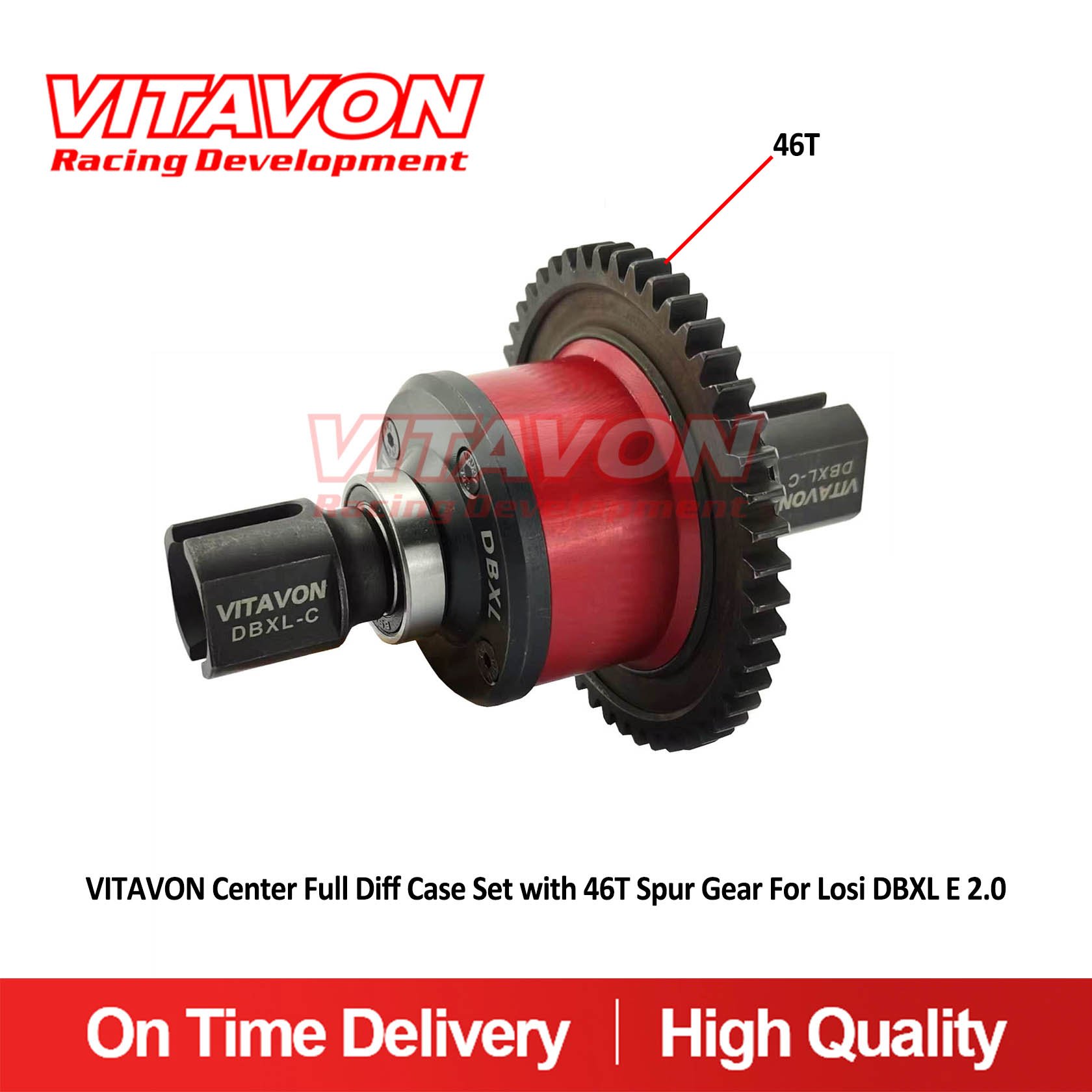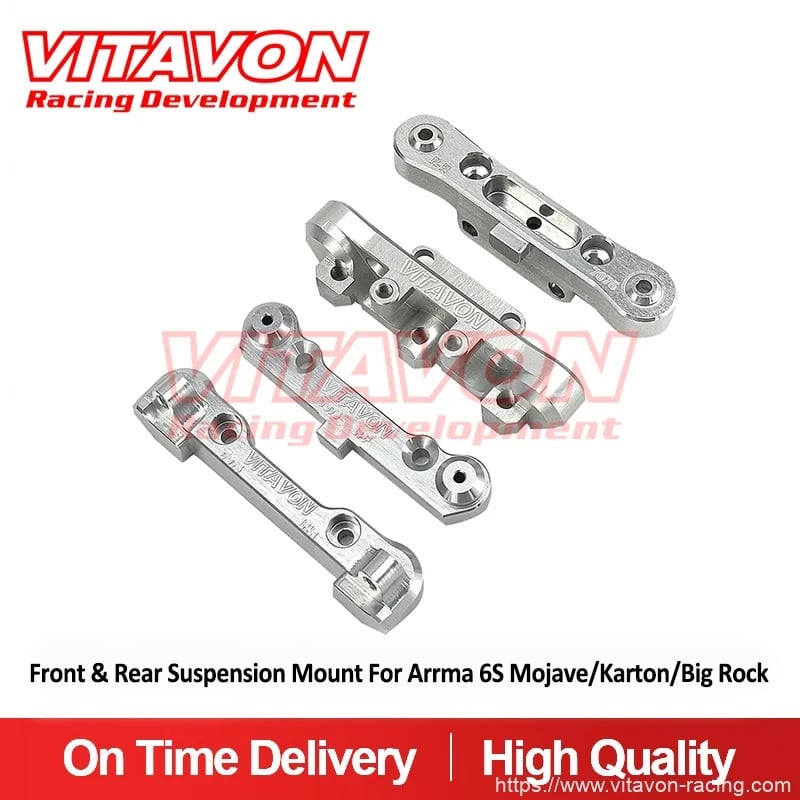Unlocking Precision: 15 Key Technical Specs of the Best Analog Servo for Optimal Performance
Table of Contents
- Key Trends in Analog Servo Technology for 2025: A Precision Engineering Perspective
- Analyzing Torque Performance Metrics: Essential Specifications for Servo Efficiency
- Exploring the Impact of Feedback Control Systems on Analog Servo Accuracy
- Evaluating the Importance of Frame Rate and Responsiveness in Industrial Applications
- The Role of Advanced Materials in Enhancing Analog Servo Longevity and Performance
- Future-Proofing Your Operations: Integrating Smart Technology into Analog Servo Systems
- FAQS
- Related Posts
In the fast-paced world of racing, getting every detail just right is super important, especially when it comes to picking the right components to achieve those top-notch results. The Analog Servo is a game changer, really. It boosts control and responsiveness, especially when the pressure is on. You know, industry reports even show that having the right specs can speed up response times by as much as 25%! That’s a big deal when you’re trying to take your vehicle’s handling to the next level. Here at Dongguan Vitavon Sports Goods Co., Ltd., we're really proud of our VITAVON Racing System. We’re all about choosing the best designs and racing-tuning options out there. Our dedication to quality shines through in the materials we use—like aerospace-grade aluminum and hardened HS steel—making sure that every Analog Servo we put into our systems not only looks good but also meets the highest OEM standards. Plus, we’ve opted for a modular design for all our components, which means they fit together nicely. This way, we can tweak performance to meet the tough demands of serious racers. For anyone looking to step up their racing game, tapping into the precision of Analog Servos is just a must.

Key Trends in Analog Servo Technology for 2025: A Precision Engineering Perspective
As we step into 2025, the world of analog servo technology is really starting to change, all thanks to the growing need for precision and efficiency in a bunch of different applications. One of the big things we're seeing is the use of advanced algorithms that really boost real-time performance. These clever algorithms make it easier to control servo dynamics, which means operations are smoother and they respond better. Plus, with IoT and smart manufacturing on the rise, analog servos are now coming with connectivity features. This means they can easily chat with other devices, making operations way more synchronized.
Another major trend is the move towards miniaturization while still keeping the power and performance intact. Engineers are working hard to shrink down the components, but they’re also improving the torque-to-weight ratio. This is super helpful not just for fitting into smaller machinery but also for energy efficiency, which is a big deal nowadays with everyone being so eco-conscious. Meanwhile, as precision engineering keeps getting better, advancements in material science are making a huge impact too. We're ending up with servos that are tougher and more reliable, ready to tackle whatever challenges tomorrow’s manufacturing might throw at us.
Analyzing Torque Performance Metrics: Essential Specifications for Servo Efficiency
So, when you're looking at analog servos to get the best performance, you've really got to dive into those torque performance metrics. I mean, torque plays a huge role in how efficient and responsive a servo is, especially in the booming electric vehicle (EV) scene, where having high-torque capabilities is just key. With electric vehicles taking off in markets like India, it’s super important to grasp how torque levels tie into speed and stability. This knowledge can lead to smarter design choices and better applications down the road.
If you want to boost the efficiency and performance of your servo systems, here are a few handy tips to keep in mind. First up, make sure you pick a servo with a torque rating that fits your application’s needs. That way, you can ensure it performs well, especially when it’s under load. Then, don’t forget to check out the power density of the motor. A higher power density usually means better responsiveness and less energy waste—both totally essential for the smooth operation of electric vehicles. Finally, make it a point to conduct regular performance tests and tweaks to keep things precise and consistent. This little habit goes a long way in making sure your servo runs smoothly, no matter the conditions.
By keeping your eyes on these torque performance metrics and following those practical tips, you’re setting yourself up for way more precision and reliability in your analog servo applications, especially as we gear up for all the changes in electric mobility.
Unlocking Precision: 15 Key Technical Specs of the Best Analog Servo for Optimal Performance
| Specification | Value |
|---|---|
| Torque Rating | 0.5 - 10 Nm |
| Speed Rating | 0.1 - 600 deg/s |
| Operating Voltage | 5 - 24 VDC |
| Weight | 200 - 800 g |
| Control Type | Analog (PWM) |
| Feedback Type | Potentiometer |
| Temperature Range | -20°C to 85°C |
| Response Time | |
| Encoder Resolution | 1000 PPR |
| Max Current Draw | 1.5 - 3 A |
| Duty Cycle | Continuous |
| Protection Rating | IP54 |
| Mounting Type | Flange / Foot |
| Shaft Type | Solid / Hollow |
| Gear Ratio | 1:1 to 1:100 |
Exploring the Impact of Feedback Control Systems on Analog Servo Accuracy
 When it comes to analog servos, feedback control systems are super important for getting the most out of accuracy and performance. You see, the quality of the feedback really makes a difference. Recent studies have shown that mixing tactile feedback with kinesthetic feedback can actually cut down on errors during reproduction and let people explore for longer periods, which is pretty cool! These insights really highlight how crucial it is to have advanced feedback systems in servo tech to improve how users interact with these devices and keep everything running smoothly.
When it comes to analog servos, feedback control systems are super important for getting the most out of accuracy and performance. You see, the quality of the feedback really makes a difference. Recent studies have shown that mixing tactile feedback with kinesthetic feedback can actually cut down on errors during reproduction and let people explore for longer periods, which is pretty cool! These insights really highlight how crucial it is to have advanced feedback systems in servo tech to improve how users interact with these devices and keep everything running smoothly.
There are also quite a few industry reports backing this up. Take a detailed study from a well-known engineering firm, for example—it found that servos with fancy feedback control systems can keep their error margins down to as little as 0.5%! That’s a pretty big jump from the older models. Plus, they pointed out that making feedback more nuanced leads to better efficiency in automated tasks, which just goes to show how important it is to have sophisticated control methods in today’s analog servos. This really shows how servo technology is evolving, with accuracy getting better and better thanks to new feedback strategies.
Evaluating the Importance of Frame Rate and Responsiveness in Industrial Applications
When it comes to industrial applications, the frame rate and responsiveness of an analog servo are super important for getting the best performance out of your systems. You see, frame rate is basically how often a servo updates its position, and it plays a big role in how quickly and accurately the whole system can respond to any changes. If you’ve got a higher frame rate, you can expect smooth and precise motion control, which is really essential for tasks that demand fine movements—think about robotic arms or automated assembly lines. But if the frame rate isn’t up to snuff, well, you might end up with lag, and nobody wants that! Lag can lead to mistakes that muck up production quality and even safety on the job, and yikes, that’s not a good situation to be in.
Now let’s chat about responsiveness. This is all about how fast the servo reacts to command signals, and it's especially crucial in dynamic environments where loads can change on the fly. A servo that’s quick to respond keeps things flowing smoothly, helping systems adjust to new demands without missing a beat. In places like manufacturing and packaging, where timing is everything, having both a high frame rate and swift responsiveness can take your operations to the next level. So, when you're on the hunt for an analog servo, make sure to look for those key specs! They’re vital for keeping your technology sharp and reliable, especially when the industrial landscape is always shifting.
Unlocking Precision: Performance Metrics of Analog Servo Systems
This chart illustrates the comparison of key technical specifications for analog servo systems, focusing on frame rate and responsiveness. These metrics are crucial in industrial applications where precision and efficiency are vital for optimal performance.
The Role of Advanced Materials in Enhancing Analog Servo Longevity and Performance
Let’s chat about how to really boost the performance and lifespan of analog servos. You know, the materials we pick really make a huge difference. Thanks to some pretty amazing high-strength composites and special metals, servo tech has come a long way. These materials help ensure that parts can handle the tough demands of high-intensity uses while just keeping things spot-on accurate. Take those lightweight but super sturdy composites—they trim down the overall weight of the servo, which means quicker response times and less strain on the mechanical bits.
On top of that, we’ve got these cool new coatings and treatments that really step up the game against environmental issues like moisture and corrosion. This kind of protection not only helps your servo last longer, but it also keeps it precise over the years. When we use advanced materials in making these devices, we also get smart thermal management, which really helps dodge overheating during those long stretches of use. So, in the end, servo performance stays top-notch, which makes them way more dependable for tricky tasks in fields like robotics and aerospace—where, let’s be honest, precision and durability are totally crucial.

Future-Proofing Your Operations: Integrating Smart Technology into Analog Servo Systems
You know, in today’s fast-paced world, where automation and robotics are just blowing up, it’s super important to blend smart tech with those good old analog servo systems if we want to boost performance and efficiency. Companies are really hustling to stay ahead and make sure they’re ready for the future. By tapping into cool innovations like IoT connectivity and advanced control algorithms, these analog servos can seriously step up their game in terms of responsiveness and adaptability. Plus, when businesses dive into data analytics and machine learning, they can snag real-time insights into how their systems are doing. This means they can make smarter decisions and streamline their operations like a boss.
And it’s not just about making things work better; integrating smart technology really cranks up the precision and enables devices to chat with each other smoothly. This connection means that adjustments can happen automatically, depending on what’s going on around them or what’s needed in that moment. Talk about consistency! As manufacturers keep pushing for both sustainability and efficiency, the top analog servos nowadays come loaded with features that help with predictive maintenance and cutting down energy use. Jumping on these advancements really opens doors to a manufacturing ecosystem that’s not just resilient but also super agile. It’s definitely raising the bar on what we can expect from modern analog servo systems.
FAQS
: Key trends include the integration of advanced algorithms for enhanced real-time performance, connectivity features for IoT and smart manufacturing, and miniaturization of components while improving the torque-to-weight ratio.
Feedback control systems significantly enhance the accuracy and performance of analog servos by providing high-quality feedback, with research showing that combining tactile and kinesthetic feedback can reduce reproduction errors.
The frame rate is crucial as it represents how frequently a servo updates its position, affecting the smoothness and precision of motion control, particularly in applications requiring intricate movements.
Responsiveness is important because it determines how quickly a servo reacts to command signals, which is essential in dynamic environments with changing load conditions.
Advancements in material science are leading to the development of servos that are more robust and reliable, enabling them to meet the challenges of modern manufacturing needs.
Miniaturization allows for easier integration into smaller machinery and contributes to energy efficiency, which is increasingly important in today’s environmentally conscious market.
Sophisticated feedback control systems can achieve error margins as low as 0.5%, significantly improving accuracy compared to traditional servo models.
Connectivity features enable seamless communication with other devices, facilitating synchronized operations and enhancing the capabilities of analog servos in smart manufacturing environments.
A combination of high frame rate and immediate responsiveness ensures that analog servos can adapt swiftly to new demands, improving productivity and efficiency in manufacturing and packaging industries.
Advanced algorithms enhance servo dynamics, leading to smoother operation and improved responsiveness, thus addressing the demands for precision and efficiency in various applications.
Related Posts
-

Exploring Opportunities for Scx24 Transmission at the 137th Canton Fair Success
-

China's Resilient Growth in Manufacturing the Best Axial Scx103 Amidst US China Tariff Challenges
-

Top 10 SCX10III Bronco Manufacturers from China at the 137th Canton Fair
-

What Enhancements Can You Expect from Scx10iii Upgrades for Your RC Experience?
-

Vitavon Wheels Take Center Stage as International Buyers Flock to Canton Fair 2025
-

Discover Scx24 Transmitter Opportunities at the Record Breaking 137th Canton Fair 2025
Blog Tags:




